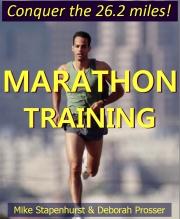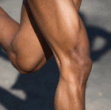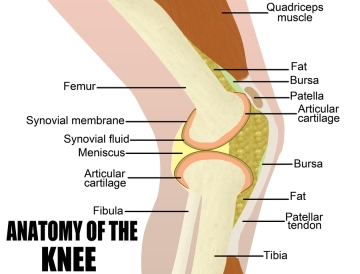| |||||||||||||
|
|
'26.2' - The Marathon Training Website: Knee Pain Prevention For Runnersby Mike Stapenhurst
The article below discusses ways to reduce the chances of knee injury. How The Knee Functions First of all we need to understand how the knee works. This complicated bone and cartilage structure plays a key role in controlling leg movement. It takes a tremendous amount of wear and tear during our lifetime.
The cartilage that is used to absorb the shock in the knee joint is called the menisci. There are two crescent-shaped pads of cartilage in each knee. The one on the inner side of the knee is called the 'medial meniscus', while the outside one is the 'lateral meniscus'. Together they act in four different ways:
Causes Of Knee Pain The cushioning cartilage around the knee becoming worn causes one of the most common injuries among runners. This condition, also known as 'runner's knee' is often caused by overuse. Increasing your weekly mileage too quickly is a factor. Marathon training also puts a lot of strain on the knees. Novice marathoners are especially susceptible as the weekly mileage climbs higher. Running tends to develop the rear thigh muscles (hamstrings) more than those in the front (the quadriceps). One of the main reasons for knee injuries is this imbalance between the hamstrings and the quadriceps. It's the thigh muscles that help to stabilize the kneecap preventing it from moving too much from side to side.
Another common cause is improper foot strike. This can either be over- or under-pronation, which puts a sideways pressure on the kneecap. Over time, cartilage damage will result. Sometimes this is also caused by running on a sloping surface such as the side of the road. A further reason for knee injuries is your body type. If you have a heavier frame or are somewhat overweight, then this puts more pressure on the knee joints when you are running. If you are in this category you have more chance of suffering from knee problems. Make sure to pay close attention to the following tips.
Here are some key things you should do to reduce the risk of knee injury. Strengthen The Quadriceps. Leg curls using a weight machine is a good way to do this, but make sure you start out with light weights until your strength increases. Another exercise is simply knee bends. Here you hold onto a table or something similar for support and gradually bend the knees until the thighs are almost horizontal. Then straighten up and repeat. Using the front of your feet makes this more effective, and do not go beyond the horizontal, which just puts extra strain on the knee joints. Wear Stability Shoes If You Pronate Check with your local running store (or physiotherapist) if you suspect that you have a foot strike problem. Then buy the appropriate shoes to correct this. I also like to wear cushioning shoes for marathon training, but this is a personal choice and might not suit everyone. Avoid Sloping Running Surfaces If you frequently run on paved roads, try to pick a flatter area where possible. Even the sidewalk is preferable although it is often a harder surface. Running tracks in gyms are usually banked, so try to avoid these as much as possible. Be Wary Of Speed Work Although speedwork is often called for in more advanced marathon programs, it can be a major contributor to knee problems. If you decide to do this as part of your training, go for the longer (slower) intervals rather than the short bursts of fast running. Most of us can run a successful marathon without including any formal speedwork in our training. Take It Easy On The Hills Hill work is a great way to improve your leg strength and aerobic capacity, and should be part of your marathon training. However too aggressive an approach, and going too fast on the downhill, can be very detrimental to your knees. This is where the 'listen to your body' advice comes in. If you have been strengthening your quads, and you are wearing the right footwear you are probably OK. Just ease off the moment you start to feel any discomfort.
Conclusion Marathon training is very demanding and puts quite a strain on your body, including the knees. If you are aware of this, and you pay attention to the above tips, you could well enjoy many miles of running without suffering form a knee injury. Knee pain can be difficult to cure once it happens and will probably put an end to your current marathon training. Prevention is the answer!
| ||||||||||||



 Knee
pain
is one of the most common running injuries. If you've been running
for any length of time, chances are you've already experienced some
knee pain at one time or another. Once you hurt your knee it can
lead to a lengthy recovery before you are able to resume regular
running.
Knee
pain
is one of the most common running injuries. If you've been running
for any length of time, chances are you've already experienced some
knee pain at one time or another. Once you hurt your knee it can
lead to a lengthy recovery before you are able to resume regular
running.

